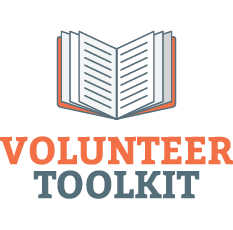How Can I Help with Phonics Instruction?
Volunteers will follow the guidelines set forth by the teacher and the phonics program used by the school. However, one strategy that you can use with students is to work with onsets and rimes. Onsets are the consonants that precede the vowels in words and syllables. Rimes are the combination of a vowel and the consonants that follow it in a syllable. Rimes may also be referred to as phonograms or word families. For example, a common word family is the –at family. Words in that family are cat, hat, mat, and flat.
After initial letters and sounds are introduced, students can think about the remainder of the word. Teaching them that many words contain chunks or word families can be a useful strategy; many words can be made from a few phonograms or rimes. Using chunks or rimes is often easier than analyzing individual letters one at a time. Rimes are consistent. For instance, when –ack appears in a word, it makes the same sound each time. We can come up with the words back, hack, Jack, knack, lack, pack, rack, sack, tack, and whack. These words do rhyme. So it would be easy to write a poem containing some of the words from a word family that would provide practice in learning the rime. This would also be a way for students to understand the connection between the written and spoken words!
Not only are rimes useful in making one-syllable words, they can be used in decoding multisyllabic words. For instance, think about –eal. This rime can be used to learn deal, heal, meal, steal and also really, sealant, and congeal! So the use of onsets and rimes is not just for beginning readers!
How would you go about helping students use rimes in decoding? Students will benefit from repeated modeling of this process. Draw attention to the rime in an unfamiliar word. Magnetic letters or letter tiles would work great for this. Compare the new to the known. Present the new word next to a known word. For instance, the student may recognize gift. When he encounters thrift in what he is reading, you would present the two words side-by-side. Remove the /g/ from gift and in its place substitute the /thr/in order to spell thrift. Say the word thrift and draw attention to the word family.
To provide students with more practice applying onset/rime knowledge to decode and pronounce words, you could use small white boards with a dry erase marker or a mini chalkboard. You might want to use sets of colored, laminated note cards with onsets and rimes or magnetic letters. Students are asked to combine onsets and rimes to create either real or nonsense words. Determining if the words are real encourages students to use their oral vocabulary to consider the word meaning. This can be especially helpful for struggling readers since they have a tendency to concentrate only on decoding and not meaning.
You might share a word family poem that you create. For instance,
Could you give me a lift?
I just finished my shift.
I need to buy a gift.
With my money I must show thrift!
Then you could talk about the words that contain the same rime. Students can record those words on a white board, mini chalkboard, or a sheet of paper. You could then use small index cards or letter tiles to share a beginning letter (onset) and a card with the word family (rime). The student is asked to blend the beginning sound and the rime together to pronounce the word. You could display /dr/ and /ift/ and the student says the word drift. He says that is a real word. When you display /p/ and /ift/ and the word is pronounced, he will say that is a nonsense word.
Another fun way to work with word families is to create riddles in which the answers are rhyming words. For instance, what would you call a bluish green sea animal with smooth fur that lives along coasts? A teal seal. What would you call a small insect that is active and lively? A spry fly! What would you call a dwelling for a small rodent? A mouse house. Of course, you would want to be sure you have discussed the words and their meanings before expecting students to be able to solve the riddle!
While learning about phonics, it is important to keep the focus on meaning. When decoding unfamiliar words in their reading, students can use phonics and the context of what is being read. You can help them learn to check what their phonics knowledge tells them with the sense of what they are reading. They should learn to ask, “Does that word make sense here?”
Check Your Knowledge
d
